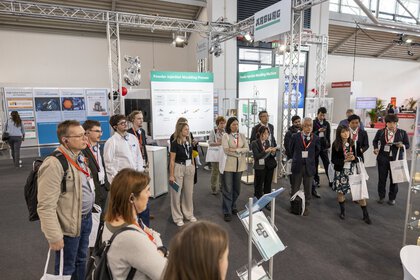Alle Vorträge

Hier finden Sie einen kompletten Überblick über das Konferenzprogramm der ceramitec 2024.
Im internationalen Konferenzprogramm der ceramitec 2024 drehte sich alles um die aktuellen Themen und Trends der Branche. Von Möglichkeiten der Additiven Fertigung über Rohstoffe und Verfahrenstechnologien bis hin zu industriellen Anwendungen. Das hochkarätige Konferenzprogramm wird organisiert von renommierten Partnern der ceramitec. Alle Vorträge werden in englischer Sprache abgehalten.
Alle Vorträge

Alle Sprecher

Seien Sie Teil einer geführten Runde zu ausgewählten Ausstellern und erhalten Sie exklusive Einblicke in Innovationen und Trends rund um die Grobkeramik und die technische Keramik – unterstützt vom ECTS und dem Göller Verlag. Die Teilnahme an den Touren ist kostenfrei. Die Guided Tours dauern ca. 45 Minuten und finden einmal am Tag in englischer Sprache statt.

Der CareerDay der ceramitec bietet Ihnen zahlreiche zielführende Optionen für den beruflichen Einstieg oder nächsten Schritt in Ihrer Laufbahn.

Erstmals wird es auf der ceramitec den Gemeinschaftsstand Young INNOVATORS geben, der vom Bundesministerium für Wirtschaft und Klimapolitik gefördert wird.
